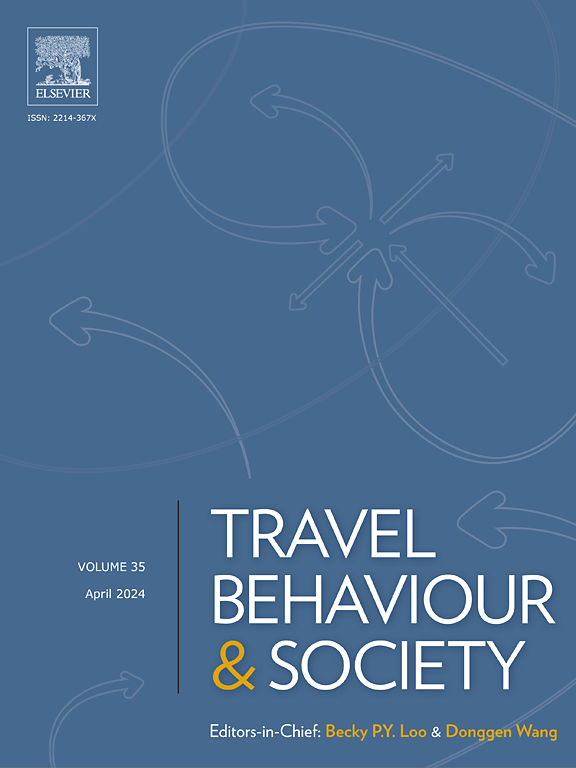City Fly: Modeling demand and vertiport location jointly for urban commuting
IF 5.7
2区 工程技术
Q1 TRANSPORTATION
引用次数: 0
Abstract
The rapid development of electric vertical take-off and landing (eVTOL) aircraft presents transformative opportunities for urban air mobility (UAM). As cities globally accelerate infrastructure development, vertiport placement must reconcile demand-driven accessibility with geographic feasibility to address societal needs. However, only a limited number of studies have embedded precise demand analysis into vertiport location selection models, and empirical research using real-world data remains underexplored. This paper proposes a novel three-step demand forecasting and multi-objective optimization model (3DF-MOM) that jointly addresses these challenges. The model predicts UAM commuting demand with minimal prior knowledge, utilizing urban geographic information system (GIS) layers to optimize vertiport location selection under dual societal-geographic criteria: minimizing noise exposure for densely populated neighborhoods, lowering operational expenditures through cost-effective spatial configuration, and maximizing demand coverage across spatially fragmented urban zones. An empirical study was conducted based on urban geographic information data from Chengdu, China, in combination with ArcGIS. The results show that there will be 155 eVTOL aircraft commuting trips per day in Chengdu by 2030. The model optimally balances noise control, efficiency, and demand coverage with six vertiports of different sizes. The 3DF-MOM framework advances sustainable low-altitude infrastructure development by embedding geographic intelligence and social equity metrics into decision-making, offering policymakers a scalable tool to harmonize environmental, economic, and spatially inclusive service quality objectives.
城市飞行:城市通勤建模需求与垂直位置的联合
电动垂直起降(eVTOL)飞机的快速发展为城市空中交通(UAM)提供了变革性的机遇。随着全球城市加快基础设施建设,垂直机场的布局必须协调需求驱动的可达性与地理可行性,以满足社会需求。然而,只有有限的研究将精确的需求分析嵌入到垂直机场选址模型中,使用真实世界数据的实证研究仍未得到充分探索。本文提出了一种新的三步需求预测和多目标优化模型(3DF-MOM)来共同解决这些挑战。该模型以最小的先验知识预测UAM通勤需求,利用城市地理信息系统(GIS)层在双重社会地理标准下优化垂直口位置选择:在人口密集的社区中最小化噪音暴露,通过具有成本效益的空间配置降低运营支出,并在空间分散的城市区域中最大化需求覆盖。基于成都市城市地理信息数据,结合ArcGIS进行了实证研究。结果表明,到2030年,成都每天将有155架eVTOL飞机上下班。该模型通过6个不同大小的垂直端口来最佳地平衡噪音控制、效率和需求覆盖。3DF-MOM框架通过将地理情报和社会公平指标嵌入决策中来推进可持续的低空基础设施发展,为决策者提供一个可扩展的工具,以协调环境、经济和空间包容性服务质量目标。
本文章由计算机程序翻译,如有差异,请以英文原文为准。
求助全文
约1分钟内获得全文
求助全文
来源期刊

Travel Behaviour and Society
TRANSPORTATION-
CiteScore
9.80
自引率
7.70%
发文量
109
期刊介绍:
Travel Behaviour and Society is an interdisciplinary journal publishing high-quality original papers which report leading edge research in theories, methodologies and applications concerning transportation issues and challenges which involve the social and spatial dimensions. In particular, it provides a discussion forum for major research in travel behaviour, transportation infrastructure, transportation and environmental issues, mobility and social sustainability, transportation geographic information systems (TGIS), transportation and quality of life, transportation data collection and analysis, etc.
 求助内容:
求助内容: 应助结果提醒方式:
应助结果提醒方式:


